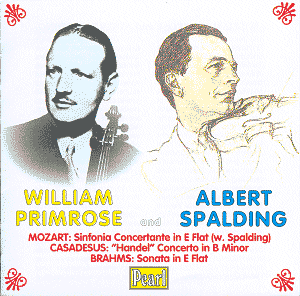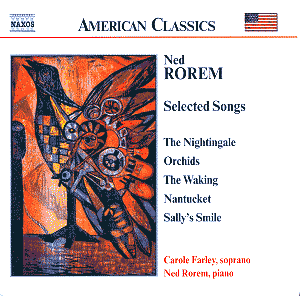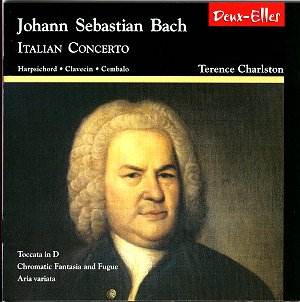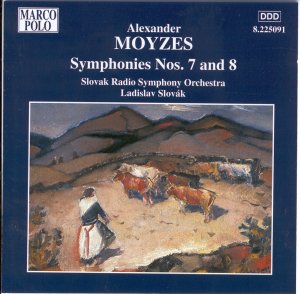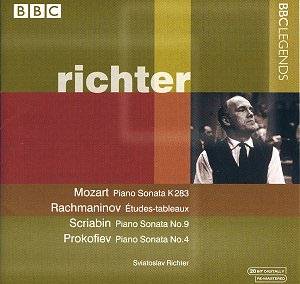 Composer: Sergei Prokofiev
Composer: Sergei Prokofiev
Works: Sonata no. 4 in C minor, op. 29; Mozart: Sonata in G, K. 283; Tchaikovsky: The Seasons, op. 37a; Rachmaninov: Etudes-Tableaux, op. 39; Scriabin: Sonata no. 9, op. 68
Performers: Sviatoslav Richter, piano
Recording: Live performance, Aldeburgh Parish Church, 19.6.1966
Label: BBC Legends BBCL 4082-2
Sviatoslav Richter, one of the towering figures of 20th-century piano performance, commands a unique presence in the realm of classical music, particularly in his interpretations of Russian repertoire and beyond. The recorded concert at Aldeburgh Parish Church in 1966 showcases a selection of works that highlight not only Richter’s formidable technique but also his interpretative depth, especially in Prokofiev’s Sonata No. 4. This sonata, composed in 1917, represents Prokofiev’s search for a new musical language amid the turbulence of World War I, juxtaposing dissonance with lyrical passages that demand a nuanced performance.
Richter’s interpretation of the Prokofiev Sonata No. 4 stands out for its clarity and structural integrity. Each contrapuntal line is articulated with precision, allowing the intertwining melodies in the slow movement to emerge with a transparency that is often elusive in less adept hands. The recording captures the dynamic range of Richter’s playing, though the sonic limitations inherent in the 1966 BBC studio setting are notable. The sound, while not bearing the full spectrum of modern recordings, is pleasantly warm and surprisingly detailed, elevating the listening experience beyond the usual expectations of archival performances.
In the opening movements of Mozart’s Sonata in G, K. 283, Richter adopts a deliberate pace, a characteristic of his later performances that some might interpret as detached. Yet, this Olympian calm serves to highlight the beauty of Mozart’s intricate lines. While some might yearn for a more operatic infusion in the phrasing—an element that can lend the music its characteristic charm—Richter’s emphasis on the sheer musical value of the notes results in a more cerebral interpretation. This perspective finds an interesting counterpoint in Chris de Souza’s notes, which suggest that Richter’s shaping of phrases conveys an operatic narrative, yet one cannot help but feel that the emotional immediacy of the music could benefit from a touch more expressive inflection, particularly in the Andante which, although beautifully executed, risks sounding overly methodical.
The Tchaikovsky selections, known for their evocative character, are presented with a similar rigor. Richter’s treatment of “Starlight Night” and “Barcarolle” eschews the typical romanticism, focusing instead on the structural aspects of these miniature masterpieces. His performance of “Troika” is particularly revealing; rather than indulging in the expected buoyancy associated with the piece, Richter offers a more abstract interpretation, emphasizing the harmonic and melodic architecture. While this approach yields a fascinating listening experience, it raises questions about whether Tchaikovsky’s intent—to evoke vivid imagery and emotional landscapes—has been fully realized.
The Rachmaninov Etudes-Tableaux, particularly No. 3 in F sharp minor and No. 4 in B minor, showcase Richter’s ability to navigate the dense textures and emotional breadth of the music. His interpretation here strikes a compelling balance between the technical demands of the score and the expressive potential of the piano, resulting in a captivating display of virtuosity and insight. Comparatively, his approach to Scriabin’s “Black Mass” offers a stark contrast; the shorter duration of his performance, clocking in at 7’28″, suggests a less indulgent interpretation than Horowitz’s more expansive rendering. Richter’s impressionistic style allows the notes to breathe, creating a vivid tapestry of colors that resonates powerfully.
Richter remains an enigmatic figure, capable of shifting from the didactic to the intensely inspired in the course of a single performance. On this occasion, his methodical approach to the selected repertoire fosters a reflective listening experience, urging audiences to engage with the music on a deeper level. The balance of clarity, technical prowess, and interpretative choices across the varied works creates a compelling snapshot of Richter’s artistry during a pivotal moment in his career, making this recording not only a testament to his legacy but also an essential listening experience for anyone seeking to understand the interpretative nuances of the piano repertoire.
